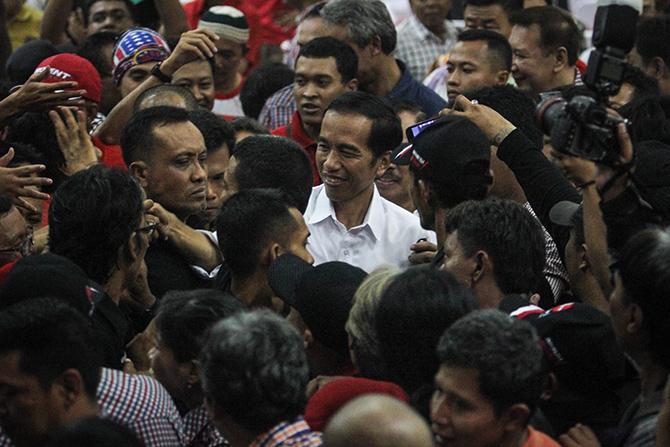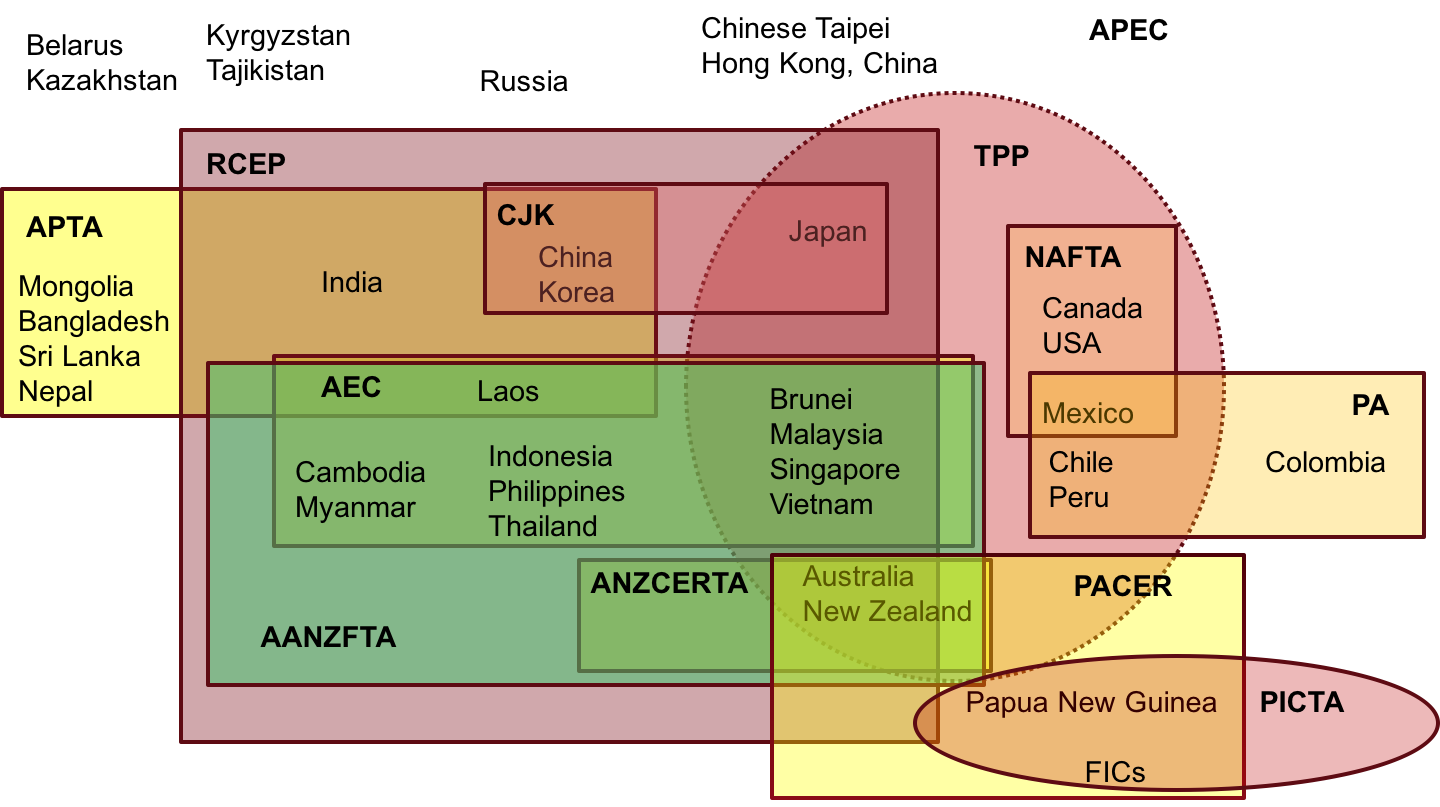
Implications for Indonesia
As we look for lessons for Indonesia, let me once again reinforce the importance of aligning domestic policy responses, not with history, but with the current and future external environment. This external environment differs greatly from the trade-driven era of Waves 1 and 2. The World Trade Organization’s efforts to achieve global alignment on tariff reductions has been replaced by a “noodle bowl” of institutions plus complex and overlapping trade agreements (as shown below).

During Wave 1 and Wave 2, regional integration contributed to and was driven by growth in intraregional trade, which was increasing at around a 30-percent compound annual growth rate – more than three times faster than growth in gross domestic product. In Wave 3, this ratio of growth in intraregional trade, GDP has been declining rapidly and approaching 1:1 parity. As the engine of international trade weakens, Indonesia’s challenge will be to accelerate the dismantling of barriers to internal trade-driven integration as a driver of Joko’s goal of more inclusive national development.
Based on these and similar experiences around the world, we would caution again that there is no “one-size-fits-all” approach. But, we have created a 10-step “wheel” as a guide to best practices in managing a national transformation program once lessons from the various models have been considered and adapted to Indonesia’s circumstances.







%20resized.png)
